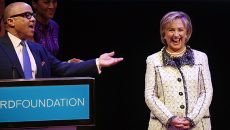Nebraska lawmakers want to drill deeper on tax incentives

By Deena Winter | Nebraska Watchdog
LINCOLN, Neb. — A panel of lawmakers is recommending changes to Nebraska’s tax incentive program to help them determine whether all those subsidies are working.
INCENTIVES: Nebraska lawmakers want to know whether their incentives programs are effective or if many jobs would have come anyway.
The committee was formed in response to a February audit that found the programs’ goals were so general it was impossible to determine whether they were being met.
The Legislature’s Tax Incentive Evaluation Committee released its report and recommendations Thursday, and legislation to implement the recommendations will likely be introduced in January. The committee recommended the incentives be evaluated by the Performance Audit Committee and Revenue Committee at least every three years to make sure they’re working and meeting lawmakers’ goals.
The committee came up with metrics to measure whether the programs are creating high-quality jobs, increasing business investment, revitalizing rural and distressed areas, diversifying the economy and stimulating entrepreneurial, high-tech and renewable energy firms.
They want the Legislative Audit Office to complete evaluations and say another position would be needed to focus on tax incentives.
They would measure how many net full-time jobs were created by incentives, as opposed to the current state report that doesn’t differentiate whether the jobs would’ve been created with or without subsidies. They would also look at what percentage of those workers filed unemployment claims within two years of being hired. And they’d examine the cost of subsidies per job.
They also would measure whether companies that get subsidies would have created more or fewer jobs if, for example, the corporate income tax were eliminated or more money was invested in education, roads and other infrastructure.
Among the other metrics the lawmakers want examined:
• Whether the average wages at businesses getting subsidies are higher or lower than the average for the county and statewide industry.
• How much subsidized companies pay in benefits for each new job created.
• How the cost of incentives (tax revenue foregone) compare to benefits (tax revenue generated), although lawmakers cautioned against solely looking at that to determine whether the programs work.
• The cost of administering the programs, including promotion, auditing and reporting.
• The cost to businesses to apply for subsidies and comply with program requirements.
• Whether companies get financing thanks to government subsidies.
• Whether companies that get subsidies remain in business longer than those that didn’t.
During a July hearing on tax incentives, Robert Zahradnik and Josh Goodman of The Pew Charitable Trusts told lawmakers on the panel to examine whether the jobs are really new or displacing other jobs. Giving subsidies to retail stores, for example, just creates more competition that could cause layoffs at existing stores, they said.
Incentivizing movie production, for example, can end up subsidizing out-of-state workers, Zahradnik said, and the state should avoid such leakage. Goodman said subsidizing grocery stores and restaurants creates a lot of displacement, too.
Zahradnik said once a company decides on a region, tax rates become a more important factor than incentive programs. Goodman said when states try to figure out how many jobs were the result of incentives, they almost always find some jobs would’ve come either way.
The committee chairman, Sen. John Harms, R-Scottsbluff, said incentive programs have the potential for tremendous benefit, but also have significant costs, and the interim study was designed to help lawmakers make improvements when the programs aren’t working.
Follow Deena on Twitter at @DeenaNEWatchdog
Editor’s note: to subscribe to News Updates from Nebraska Watchdog at no cost, click here.







